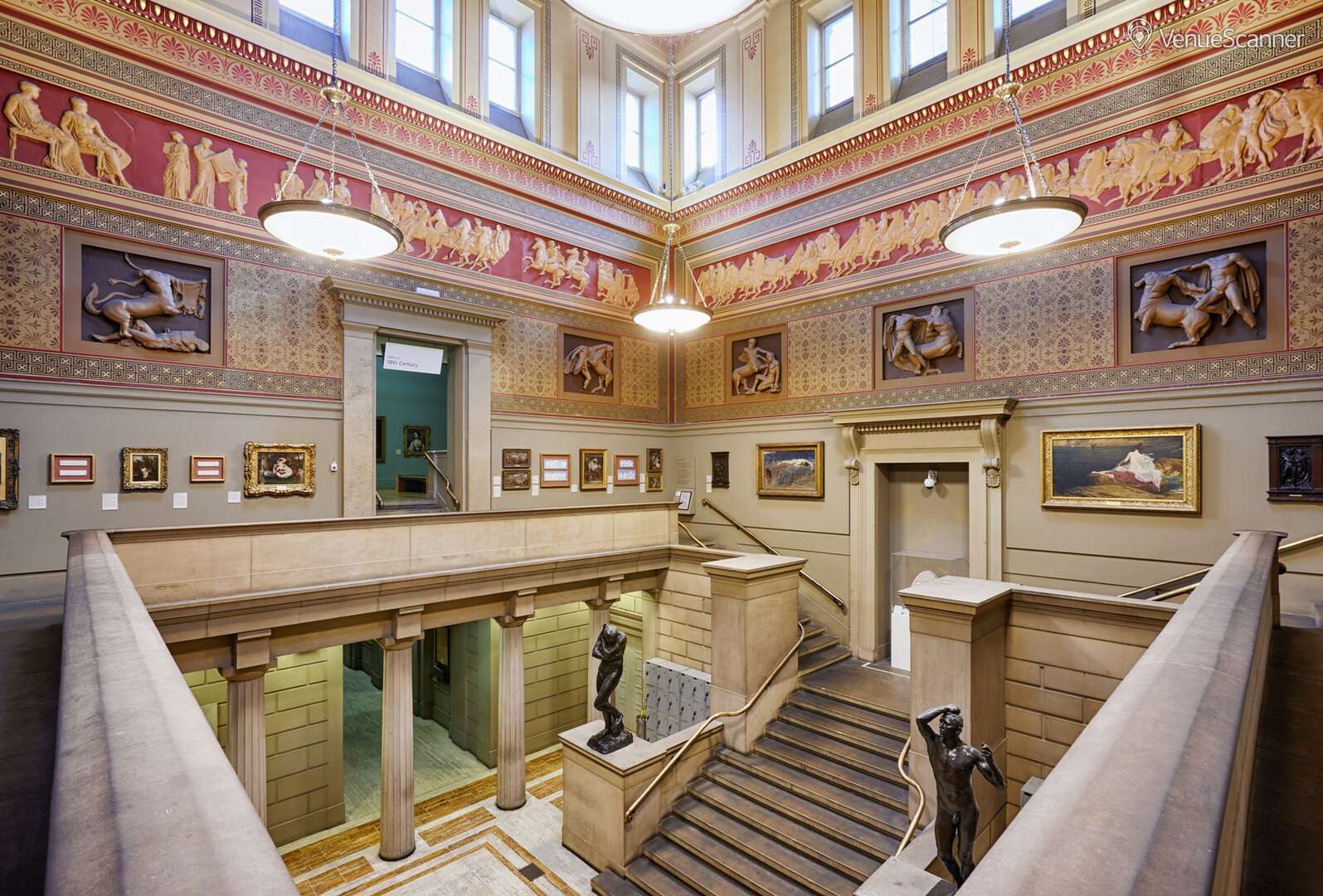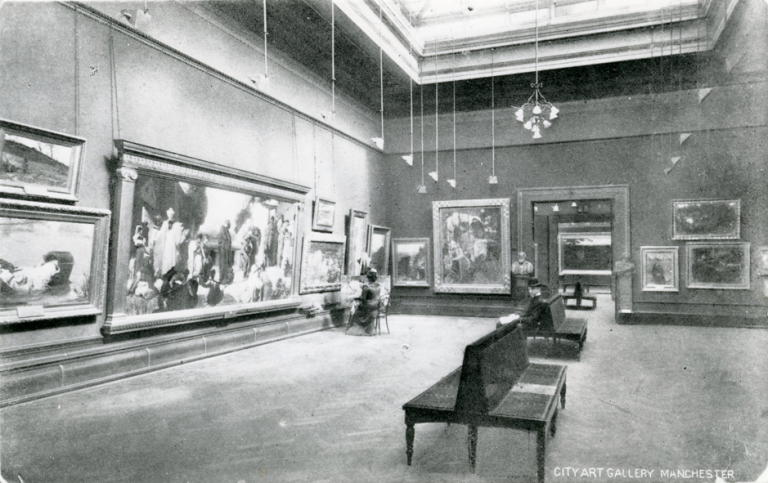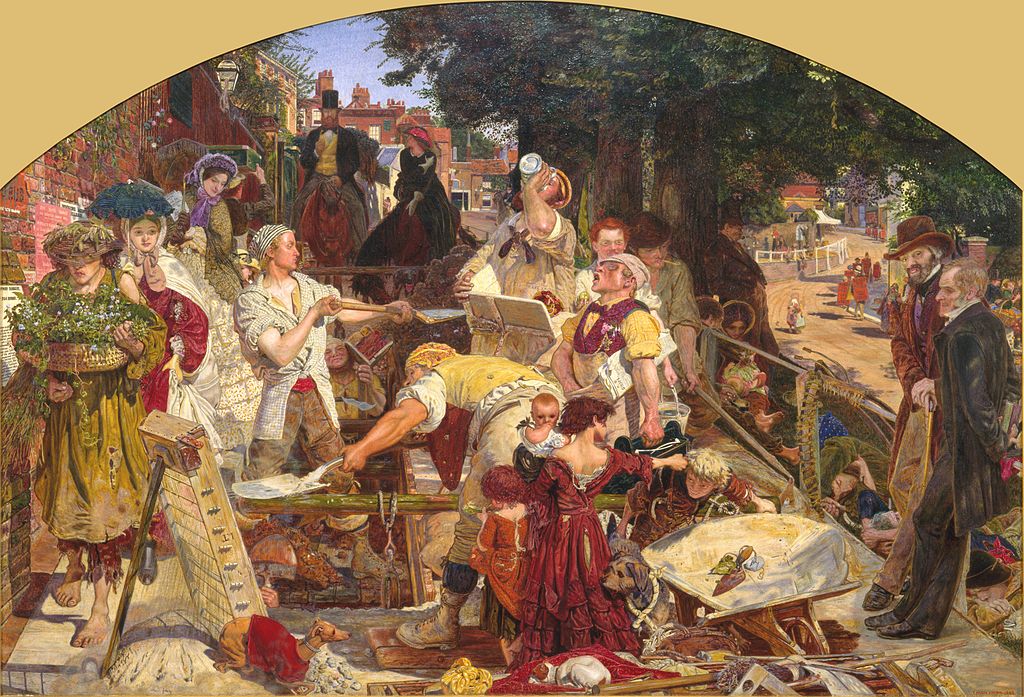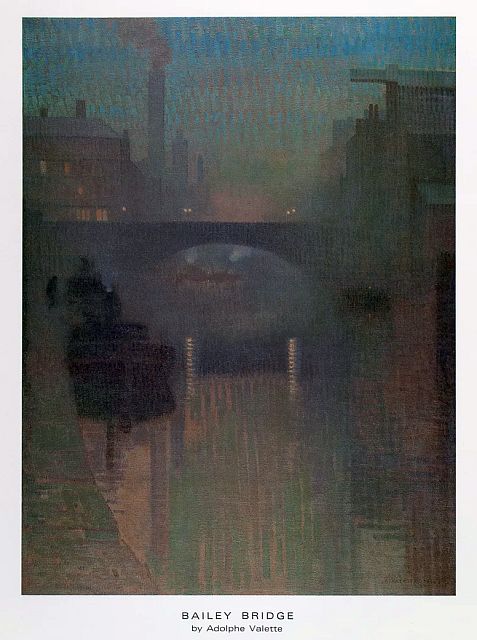 Interior of Manchester City Art Gallery
Interior of Manchester City Art Gallery
There were 20 on the tour + Jonathan. The weather wasn’t helpful as it rained which did affect us as we started by looking at the outside of the Art Gallery, the Athenaeum which became the art gallery extension, architect of both being Sir Charles Barry. The Art Gallery is Greek style while the is Palazzo style which influenced many of the warehouse buildings of the area.
Inside, we looked at a number of pre-Raphaelite paintings, starting with ‘The Workers’, Jonathan’s favourite and he explained what exactly was happening and what the painter wanted to convey to the public. We also went into the Lowry and Valette gallery and looked at sculptures. On this latter point, the Gallery is trying to engage with visitors more by exhibiting sculptures from the stores. Apparently, overall, only 5% of the Art Work the Gallery owns is on display.
We were not allowed into the storage area as the Gallery is concerned about malicious damage to art works by climate activists. Jonathan said he did say that he didn’t think Marple Local History Society members were a threat, but the decision was still no.
Hilary Atkinson
Our guide Jonathon Schofield gave us a brief history of the area’s architecture. The Art Gallery comprises three connected buildings, two built by Sir Charles Barry. The main gallery was built in the 1920’s for the Royal Manchester Institution. The premises and collection it contained were given to the city in 1882. Interestingly it was on condition that £2,000 per annum would be spent on art for the next 20 years.(which enabled an impressive art collection to be acquired).
Barry built the Athenaeum in 1837. Unlike the Greek style of the earlier building this was in the later Palazzo style which was copied by the wealthy cotton owners in this well-to-do area.

1920's Art Gallery
We concentrated on a small number of painters, in particular Ford Maddox Brown. His earlier work was admired by Dante Gabriel Rossetti who asked him to be his tutor. Through Rossetti Maddox Brown met and was influenced by members of the Pre-Raphaelite Brotherhood. They believed in realism , the accurate depiction of nature, vivid detail and rich bright colours.

'Work' (1865) by Ford Madox Ford
Dimensions 137 cm × 198 cm (53.9 in × 77.9 in)
Location Manchester Art Gallery, Manchester, England
We looked in detail at what is generally considered his most important painting “Work”. It contains a wealth of detail not necessarily evident at a casual glance. Madox Brown is portraying the Victorian social system. All levels of Victorian life are there, each character representing a social class. For him the labourer in the foreground is a fit subject for art. Every figure tells a story right down to the ragged children. The black band on the baby’s arm denotes a bereavement, their ragged appearance suggests it was their mother.
 Maddox Brown’s concern with social issues prompted him to open a soup kitchen for Manchester’s hungry. His other major achievement was the Manchester Murals, a cycle of 12 paintings in the Great Hall of Manchester Town Hall depicting the history of the city.
Maddox Brown’s concern with social issues prompted him to open a soup kitchen for Manchester’s hungry. His other major achievement was the Manchester Murals, a cycle of 12 paintings in the Great Hall of Manchester Town Hall depicting the history of the city.
We looked briefly at a work by Pierre Adolphe Valette, a French Impressionist who spent most of his career in England. He captured the atmosphere of Manchester’s industrial landscape. His painting “Bailey Bridge over the River Irwell” captures a smog ridden view of the bridge with factories and chimneys in the distance. LS Lowry was a student of his.
Dante Gabriel Rossetti was one of the founders of the “Pre Raphaelite Brotherhood”. His painting Astarte Syriaca depicts a full length sensual female figure gazing towards the viewer, almost stepping out of the frame. The model was Jane Morris, wife of William Morris.
The Pre Raphaelites used living people for their portraits. Rossetti’s personal life was closely linked to his work especially his relationships with his models and muses Elizabeth Siddal (whom he married) and Jane Morris.
Finally we heard about an incident which took place in the Art Gallery on 3rd April 1913. 3 suffragettes attacked a number of pictures (14 in all) cracking their glass. One of the pictures was Rossetti’s Astarte Syriaca. ( It seems that attacking pictures is not a new form of protest.)
The trip was very interesting and informative. The next time I visit the Art Gallery (taking advantage of their excellent café) I shall spend time looking more closely at paintings I have previously just glanced at.
Lesley Taylor

